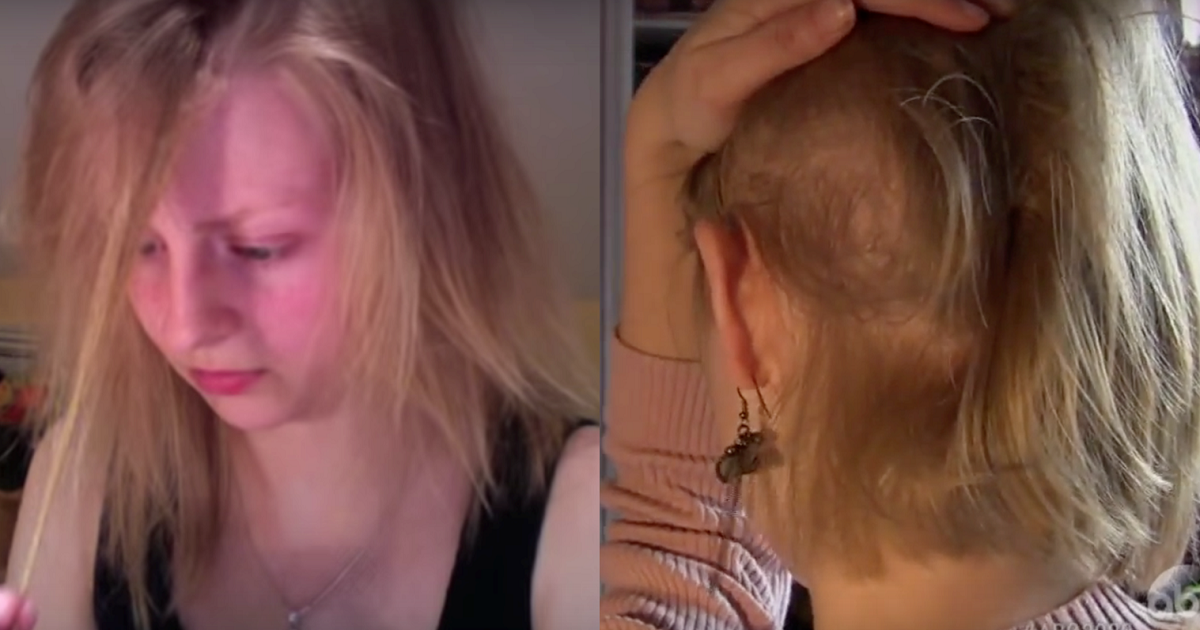4 Surprising Ways People Hurt Themselves to Relieve Stress
By:
Have you ever felt the urge to yank out your hair in frustration? That feeling quickly fades for most people, unless you're one of the estimated 3.7 million people in the U.S. with trichotillomania, a disorder that causes sufferers to compulsively rip out their hair. (Trigger warning: The following may be triggering for those who self-harm.)
 YouTube/Beckie0 - youtube.com
YouTube/Beckie0 - youtube.com
Hair-pulling is just one form of self-harm you might not be familiar with. The Mayo Clinic defines self-injury (or non-suicidal self injury) as deliberately harming oneself physically, as a way to relieve stress, anxiety, and other intense negative emotions. As Dr. Mark Ragins, Medical Director of the MHA Village, an adult recovery program at Mental Health of America (MHA) of Los Angeles, explained: "It may seem strange, but people are doing it to relieve pain, rather than to cause it.” But the behavior’s even more complex. Certain impulse control disorders — the same category in which you’ll find Obsessive Compulsive disorder, kleptomania, and compulsive gambling — lead people to obsessively chew on their lips, pull their hair, or pick at their skin until they have scarring and infections. Despite efforts to quit, many sufferers find themselves unable to stop.
Most people are familiar with cutting, thanks to its frequent depiction on popular television shows and movies like Degrassi: The Next Generation and Thirteen. Celebrities, including Angelina Jolie and Demi Lovato, have raised public awareness by opening up to the media about past struggles with it.
 Flickr/Gage Skidmore - flic.kr
Flickr/Gage Skidmore - flic.kr
Though cutting may be the most common type of self-injury, research shows it's far from the only approach. ATTN: sat down with Dr. Ragins to learn more about other, common forms of self-injury that might fly under the radar.
1. Hair-pulling (trichotillomania):
As mentioned above, trichotillomania causes sufferers to frequently and obsessively pull hair from their head or body. It falls under a range of conditions known as “body-focused repetitive behaviors,” which also includes compulsive scab-picking and nail biting. Some people may pluck out their hair for hours at a time, resulting in balding and hair thinning. According to Dr. Ragins, this brings intense shame and embarrassment, but without treatment, people remain unable to control the impulse to pull out their hair.
2. Headbanging:
A far cry from the the dance move of choice among metalheads, this kind of headbanging refers to the rocking of the head back and forth repeatedly. Some people may bang their heads against a wall or other objects, causing serious harm. According to Dr. Ragins, this behavior most commonly affects individuals with a history of abuse or neglect during infancy. "In the crib, the only way to deal with those experiences was rocking the head back and forth," he said. "For people who are traumatized very early on, that same behavior becomes an anxiety releaser later in life."
3. Skin-picking:
While most people feel the urge to pick scab now and then, dermatillomania (also known as excorciation or pathological skin picking disorder) causes individuals to spend hours at a time picking scabs, acne, moles, and even healthy skin. They may pick any part of the body, but typically target areas the scalp, face, lips, fingers, and gums. This habit interferes with the healing of wounds, and often leaves visible scars. Although most people don't intend to hurt themselves; they feel unable to resist the urge to pick and may engage in the behavior unconsciously.
4. Infecting or making oneself sick (Munchausen syndrome):
While most people aim to avoid hospital visits at all costs, individuals with a rare condition known as Munchausen syndrome go to great lengths to stay in the sick ward. Typically, individuals will feign symptoms of illness, but in some cases, they may create medical maladies by ingesting household products or exposing themselves to substances they're allergic to.
In an interview with Time, Dr. Marc Feldman, a clinical professor of psychiatry at the University of Alabama and a leading expert on Munchausen, described two patients whose self-harm ultimately proved fatal. Seeking to create nodules on her skin, one of Feldman's former patients died after injecting herself repeatedly talcum powder. Another patient wound up with a brain abscess after drilling a hole into her skull and spraying urine and saliva onto her brain matter. Feldman said that "purely emotional satisfaction, often involving getting attention and sympathy" is the primary driver of such self-harm. Patients may have been hospitalized during childhood and "unexpectedly found that the hospital was a warm and nurturing place," later seeking emotional support through the medical system.
Why people may self-harm.
With the exception of Munchausen, self-harm is seldom an attention-seeking behavior. Dr. Ragins likened it to cigarettes, sugar, sex, and exercise — a way "to deal with stress by manipulating our endorphins." To overcome self-injurious behavior, he stressed not simply finding alternatives, but building meaningful connections with other people. "People who self-injure tend to be isolated and miserable," he explained. "It's easier to maintain equilibrium when you're connected,"
Here is a resource to cope with body-focused repetitive behaviors.
UPDATED 4/14/201 at 6:25 p.m.: This piece has been updated to better distinguish between self-injurious behaviors and those that are associated with other mental health issues.
